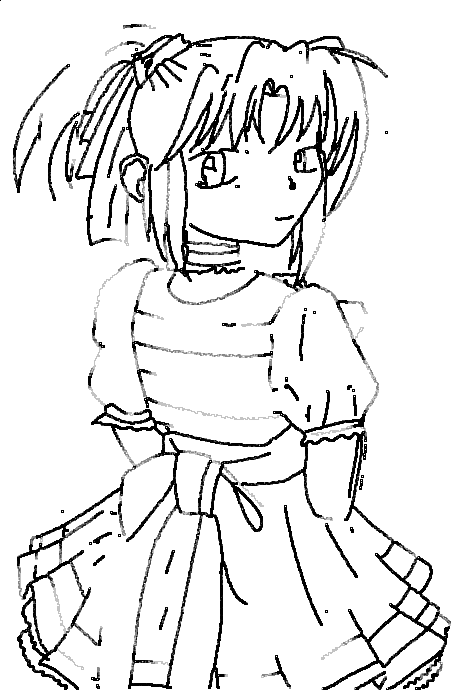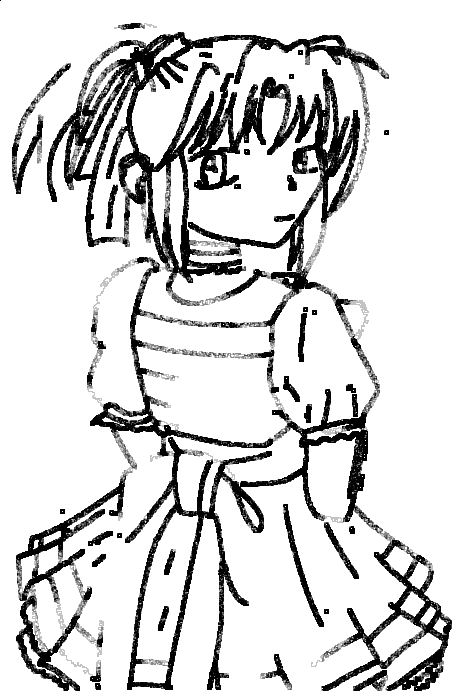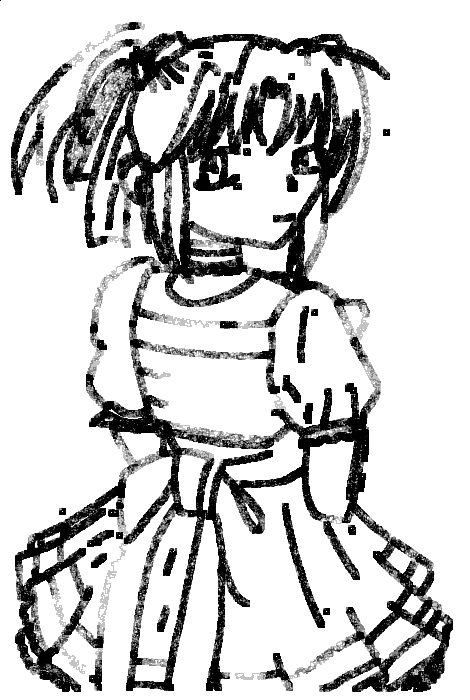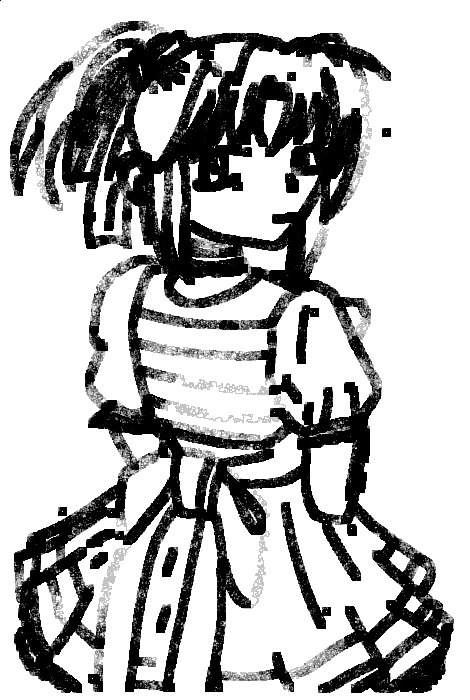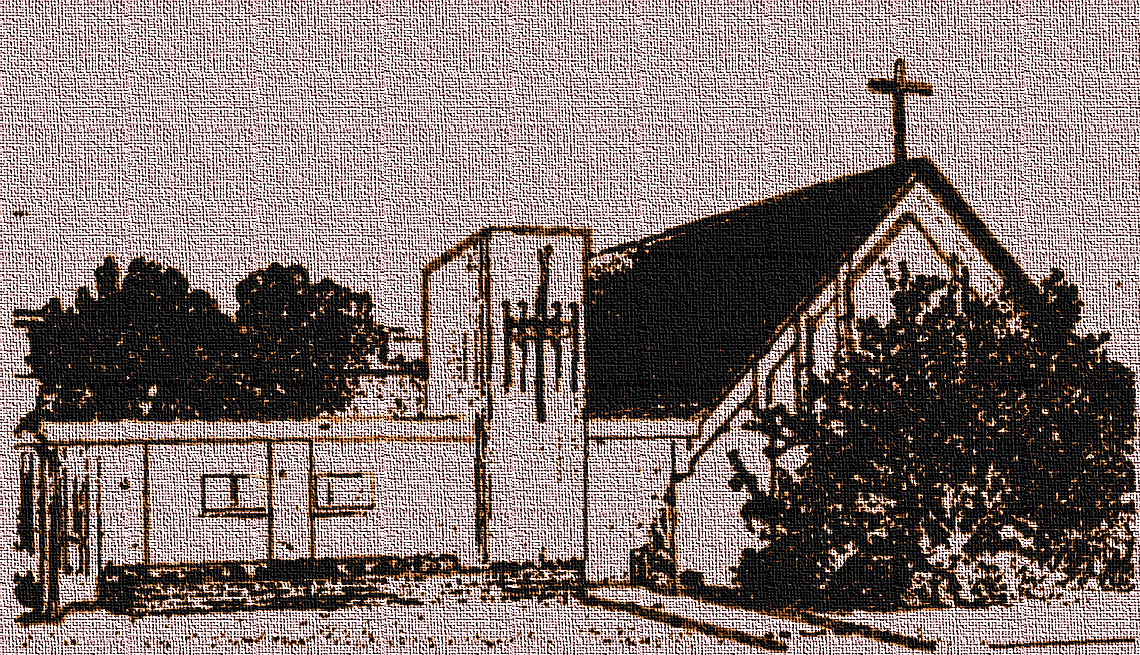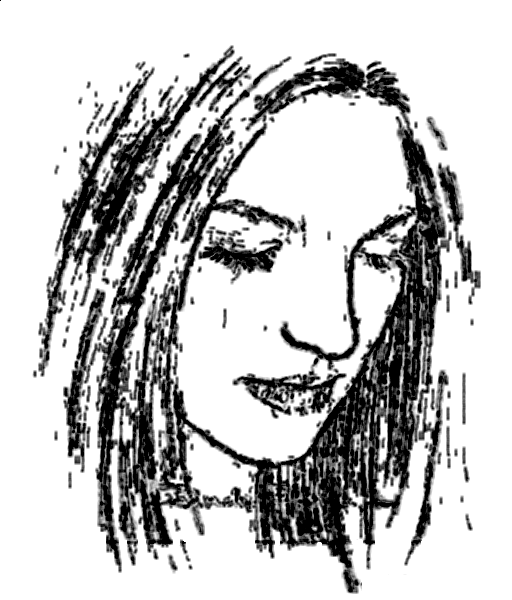
Sketching Through Randomized Operations
(Non-photorealism through Algorithmic Art)Algorithm used:
Subhro Roy, Rahul Chatterjee, Partha Bhowmick, and Reinhard Klette. MAESTRO: Making Art-Enabled Sketches Through Randomized Operations. CAIP 2011, Seville (Spain), 29-31 August, 2011, Lecture Notes in Computer Science (LNCS), Springer, Vol. 6854, pp. 318-326.Abstract: Contemporary digital art has an overwhelming trend of non-photorealism emulated by different algorithmic techniques. We have devised such a technique that uses a randomized algorithm to create artistic sketches from line drawings and edge maps. A curve-constrained domain (CCD) is defined by the Minkowski sum of the input drawing with the structuring element whose size varies with the pencil diameter. Each curve segment is randomly drawn in the CCD in such a way that it never intersects itself, whilst preserving the overall input shape.
The fact that an artist often uses irregular strokes and sub-strokes with varying shades and intensities while sketching is rightly captured in our randomized curve sketching. In particular, some sketched segments get lightly shaded in our technique compared to other heavily-shaded ones, and a sub-segment also may be lighter or deeper in shade compared to the rest of the segment—in a pseudo-random or mystic manner—which characterizes the novelty of our algorithm. Simulation results demonstrate its efficacy and elegance.
Shown aside: A typical output by our algorithm MAESTRO.
CCD formation and random curve generation
Left: Minkowski sum (in blue) of a typical (simple and irreducible) digital curve (deep green) from p to q; red lines show the borderlines through p and q for CCD initialization. Right: Cells occupied (β >0) by the initialized curve are shown in violet.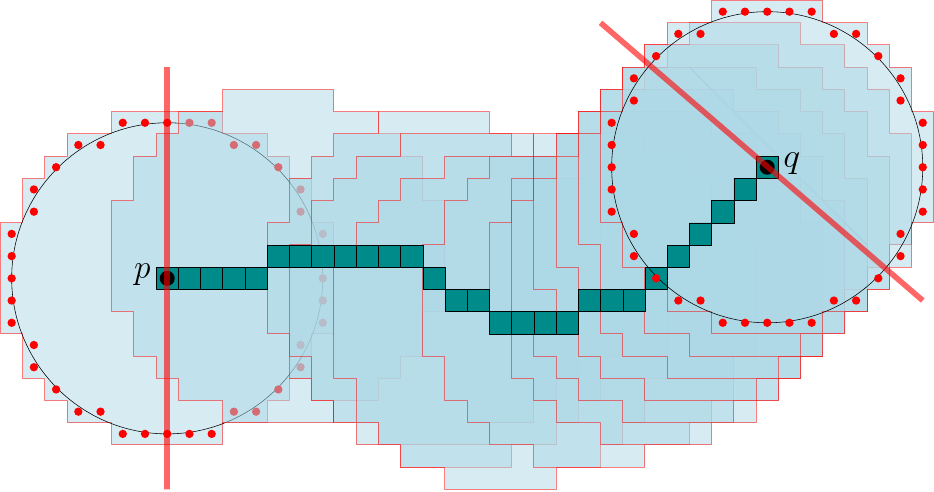
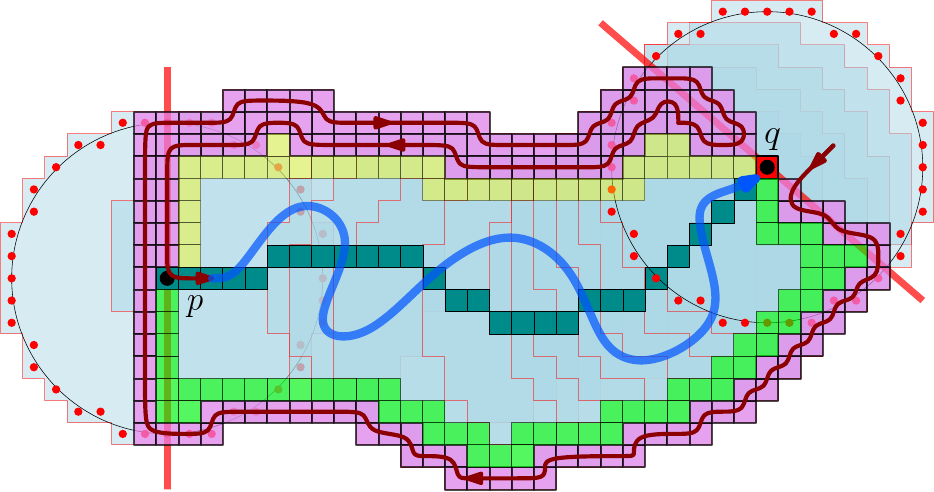
Effect of variation of pen width & stroke intensity
